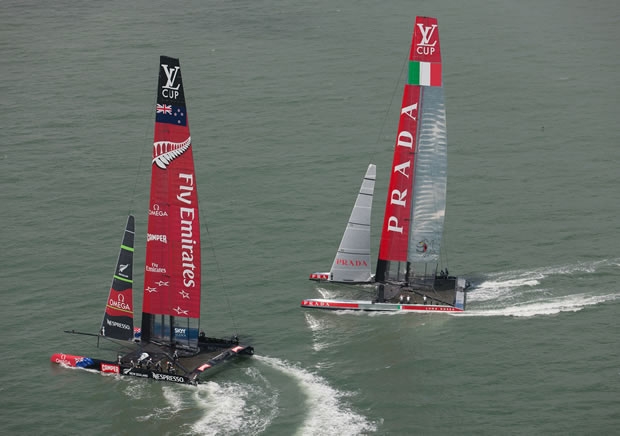
First proper Louis Vuitton Cup race
After three shadow boxing affairs, where their opponents failed to show, the first real race between two actual boats in this sham of a Louis Vuitton Cup took place with Emirates Team New Zealand and Luna Rossa Challenge lining up.
The two teams contested the 2000 America’s Cup match, and the 2007 Louis Vuitton Cup final. For the 34th America's Cup they shared a design package and many hours of training together in the lead up to this year's event.
The Emirates Team New Zealand crew today comprised: Dean Barker (helm), Ray Davies (tactician), Glenn Ashby (trimmer), Chris Ward (grinder), Rob Waddell (grinder), Derek Saward (floater grinder), James Dagg (trimmer), Grant Dalton (grinder), Chris McAsey (grinder), Jeremy Lomas (pit) and Adam Beashel (bow)
On Luna Rossa were Max Sirena (skipper and pitman), Francesco Bruni (tactician), David Carr (pitman/grinder), Pierluigi de Felice (trimmer), Simone de Mari (primary grinder), Chris Draper (helmsman), Xabi Fernandez (wing trimmer), Nick Hutton (bowman), Lele Marino (wing grinder), Marco Montis (freestyler) and Giles Scott (hydraulic grinder).
Held in 16-17 knot winds with occasional puffs of 20, the outcome of today's event hardly came as a surprise. Luna Rossa charged into the start box coming in from the left 10 seconds early, as allowed by the rules, to prevent a high speed dial-up and duly crossed ahead of Emirates Team New Zealand. The Kiwis gybed and sped off in pursuit of the Italian team. As Chris Draper rounded up and tacked Luna Rossa's AC72, in an expertly-timed manoeuvre the Kiwis performed the same move inside of them. Draper was unable to get around far enough to duck the Kiwi's transom and from there the two boats were effectively dialled up with the Emirates Team New Zealand boat between Luna Rossa and the start line. With both boats effectively stopped, Barker with just seconds to go to the gun turned the helm to bear away and sped off towards the line to make their reaching start. Luna Rossa could do nothing but follow with the Kiwis crossing the start line 30 seconds after the gun at 41 knots, with the Italians eight seconds behind and slower to plug the trigger and get their AC72 cranking.
As Ray Davies, Emirates Team New Zealand tactician later observed: “There aren’t too many moves you can pull off in this type of start. It’s a short time period, enough for one or two manoeuvres. That’s a standard move we’ll see. If you opponent doesn’t get out of that tack well, there’s an option to tack to leeward and stop the race.”
Luna Rossa skipper Chris Draper countered: “We’ve done a few pre-starts against them in the 72s and have generally come off better. So it was frustrating to make a pickle of it then."
From then on the Kiwis continued to extend and extend - not overly surprising as the Italians were sailing a copy of their Mark 1 boat and while the Kiwis are a generation further advanced. After sailing a 15.47 mile course, Emirates Team New Zealand finished in 43 minutes, 52 seconds, almost five minutes 23 seconds ahead of Luna Rossa, during which they recorded a top speed of 42.33 knots and generally appeared to be faster on every point of sail, but particularly upwind and were clearly faster and slicker in their manoeuvres. The Italian time was not helped by being penalised for infringing a course boundary line on the second run.
“It was good to have two boats out there on the racecourse,” said Emirates Team New Zealand helm Dean Barker. “It can only make you better because you put yourself in different positions; you get to find out what’s going on around the start line and the first reach. That’s all paramount to how the race plays out.
“It’s important to be in front at the bottom, so you have to be fast downwind to capitalize there.Luna Rossa has stepped it up on the downwind stuff. They probably have some work to do on the upwind stuff, but it’s early days for them and their new systems and setup. They’ll get better for sure.”
Luna Rossa helmsman Chris Draper added: “We ended up almost where we thought we’d be, probably a little bit worse off. I think the majority of the losses were in boathandling and a little bit in upwind boatspeed. But it’s all fixable and we knew that was there, so no massive surprise. To be honest the pre-start was 10 seconds of the race and they beat us by five minutes, so the pre-start didn’t mean a whole lot.”
The Italian team's skipper Max Sirena said: “I am obviously not happy with this result, but the positive aspect is that a significant part of our gap can be attributed to factors that we can easily improve such as maneuvers and boat handling. We certainly have to also improve the performance of the boat, especially upwind, but also for this we have a series of new technical developments that will soon be ready. We have always said that the Round Robins are a necessary phase in our learning and technical development process, all of which are necessary to be competitive in the Semi Finals.”
So what did we think of the racing? Well the race was hardly competitive, but then we have seen numerous monohull match races where one team has won the start and then whitewashed the opposition. But it should be born in mind that the AC72s are not only a new style of very extreme boat, but they were the first iteration of AC72s and there were certainly equally significant speed difference between the first generation ACC boats that on their first outing contested the 1992 America's Cup. And because the AC72s are so much faster than anything we have seen before the speed differences are further magnified.
It would have been a much closer race for example had Luna Rossa won the start.
The next scheduled race of the Louis Vuitton Cup is tomorrow, and will feature Emirates Team New Zealand up against a virtual Artemis Racing.
From Carlo Borlenghi/Luna Rossa
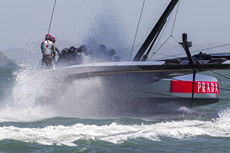 |
|
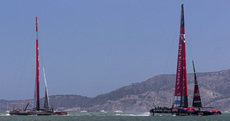 |
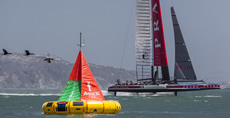 |
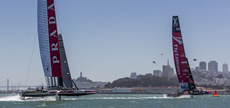 |
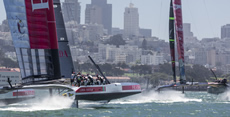 |
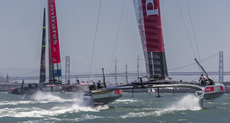 |
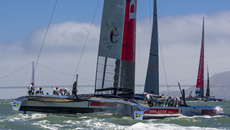 |
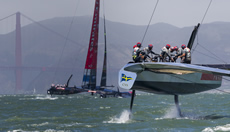 |
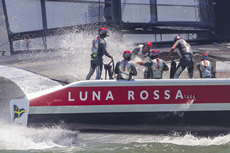 |
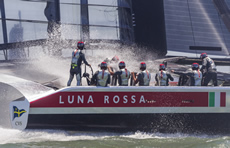 |
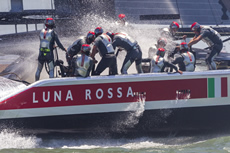 |
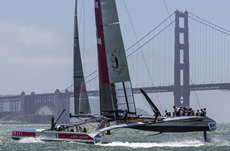 |
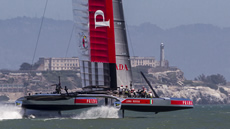 |
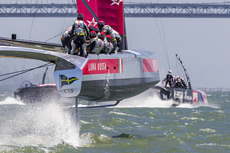 |
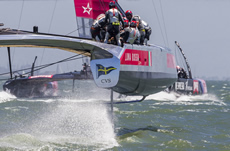 |
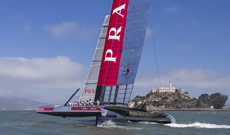 |
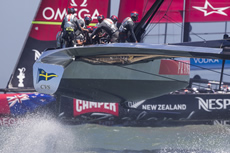 |
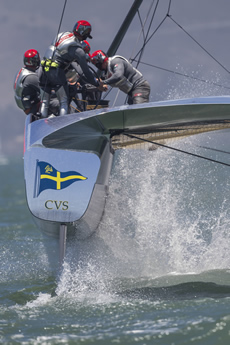 |

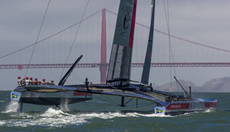







Latest Comments
Add a comment - Members log in